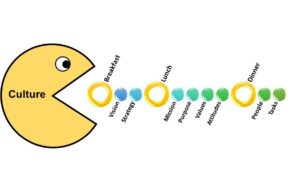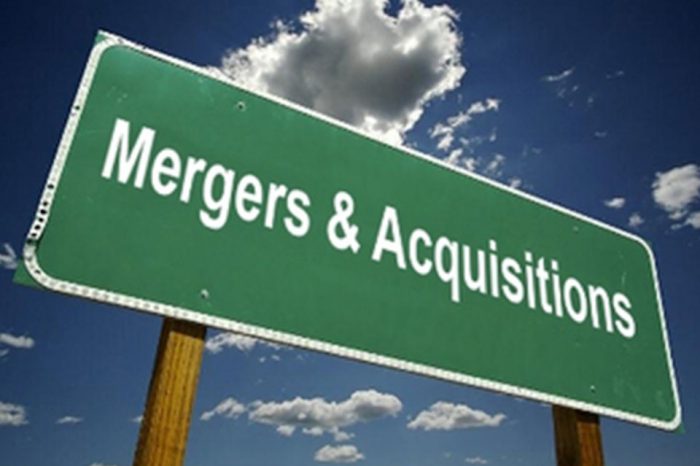Culture Thrives at SESCO
 Over the past couple of years much has been talked, and written, about corporate culture and the evolution that companies “have to” make. This “realization” emanated seemingly from the pandemic which generated increased early retirement, amplified interest in work from home and stimulated conversation about “work / life balance”.
Over the past couple of years much has been talked, and written, about corporate culture and the evolution that companies “have to” make. This “realization” emanated seemingly from the pandemic which generated increased early retirement, amplified interest in work from home and stimulated conversation about “work / life balance”.
Further, and rightfully so, there is more awareness, and proactiveness in workforce diversification.
At the end of the day, it is about the culture you want for your company or the culture of a company you want to work for. Companies can “talk” the issue but “walking” it is totally different. Companies cannot change overnight. They are the accumulation of their peoples’ experiences and policies. Policies can change. It is not feasible to change all of the people (and sometimes that intransigent person is a quality individual who is very skilled, but could be, shall I say, “quirky” (yes, I am trying to be politically correct!)
While many companies are being proactive and investing in initiatives and have changed the titles of some people, SESCO Lighting, reportedly the leading lighting agency in the country based upon revenue, has been living its culture for 55 years.
Recently Linda Longo, executive director of US Lighting Trends, and I “sat down” (yes, on a Teams call), with John Palk, President of SESCO. Our discussion was revealing as John was very open with what differentiates SESCO and how they live their culture daily. And he shared some of the secrets that help make their culture come alive.
And this is a company that has less than 3% turnover!
Culture Club: What Makes SESCO Unique
Here’s the article:
Even before the pandemic, the labor market was tight since Baby Boomers – who make up the largest population in U.S. history – are approaching retirement age and leaving the workforce in record numbers.
While every industry has had great difficulty retaining and attracting employees over the past several years, the nation’s largest agency of lighting manufacturers’ representatives, SESCO, has been growing virtually untouched by the labor shortage. What’s their secret? President & CEO John Palk credits the company’s ethos.
“SESCO has averaged below 3% turnover over the past three years – including The Great Resignation and all of the labor shortages – and that goes back to our culture. Anyone can say they have a great company culture, but you have to prove it.”
Headquartered near Orlando, SESCO maintains 22 locations throughout the Southeast, spanning seven states as well as Puerto Rico and the Caribbean. Repeatedly ranked by Orlando Business Journal as one of the Best Places to Work, SESCO has grown to 375 employees and exceeds $400 million in sales.
Mike Segal and Murray Graham founded SESCO in 1967 as an electrical supply company (Southeast Electrical Sales Company) with warehouses in Tampa and Hialeah, Florida. While the business was almost immediately profitable, a pivotal moment came in 1973, when a major lighting manufacturer invited the company to represent them throughout the state. Six years later, the firm became a primary source of lighting for a certain theme park in Orlando, which understandably advanced the business further. Eventually, the company name was shortened to SESCO.
It’s easy to assume that the early success came from being in the right place at the right time with the right products, but the real reason goes deeper. SESCO’s longevity and strength, even during years when the industry faced economic challenges, is the result of a well-defined company culture that was established early on.
Define Your Culture
Palk says the heart of SESCO could be summed up in one word: Dynamic. “I think a key part of developing a Best Places to Work culture is understanding that it must be dynamic,” he explains. “Our company culture is open to constant change, activity, and progress — and it’s been that way since the beginning. No matter the size, an organization needs to be nimble and responsive to change. Often enough, that flexibility not only helps define a key aspect of your culture, but also that nimbleness helps to engage employees at a higher level.”
A veteran of SESCO before he was appointed President & CEO in 2020, Palk has worked in nearly every role in the company — and that experience provides a well-rounded perspective. “If you were to look at the culture of SESCO – and it’s something I think a lot about – when you think about being dynamic, as an ESOP (Employee Stock Ownership Plan), we are always looking at how to best grow the business.”
Today, SESCO is more inclusive and more diverse than ever before. “We’re in an industry where we have all kinds of different influences, such as contractors, distributors, architects, electrical engineers, and lighting designers,” Palk states. “Many companies hire for what they call a ‘cultural fit,’ and I personally disagree with that philosophy. If, as a leader, you want to develop a strong culture – something truly worthy of a Best Places to Work distinction – hire to add to your culture. Bring in folks who add something to your business, who bring a dynamic view, mindset, skillset, or thought process. Hiring to get more of what you already have leads to stagnation and an organization that doesn’t evolve. For us, that’s being intentional. When we’re interviewing someone, we really look at all parts and pieces. It’s one of those questions we ask ourselves, ‘Is this more of what we already have, or is this person going to be additive to what we have.’”
SESCO just celebrated its 55th anniversary on December 1 and has been an ESOP for half of those years. “I think we’ve had multiple evolutions of our culture, but also some tenets that have remained like ‘work hard, play hard.’ We have a slogan or philosophy that I state at the very beginning of an interview, ‘If you’re not having fun, find a way to fix it or do us – and yourself – a favor and find another job.’ We pride ourselves and hold ourselves accountable to creating an environment that is something you want to be a part of. We are always intentional in looking introspectively and asking, ‘What’s our weakness?’ As an organization, we get together twice a year to introspectively look at ourselves. We do a hard SWOT analysis (Strengths-Weaknesses-Opportunities-Threats) that is sometimes eye-opening and sometimes a little scary, but it’s our responsibility to address those weaknesses and turn them into opportunities and realize what threats we have internally as well as externally and do something about them. I would say that the evolutional and intentional changes we’ve made over the years have been because of looking at ourselves very hard in the mirror on a very regular basis and saying, ‘How do we become a better company today and every day.’”
That tough analysis has paid off. “Because of all of that work, we’re at a better place today than we’ve ever been,” Palk comments. “Our advice to other businesses is to hire and retain great people — and more importantly, to trust them. Over the last three to four years, we’ve been deliberate in eliminating ‘micromanagement’ as a descriptor used in our company, and I would absolutely challenge any other organization to do that,” he affirms. “Micromanagement, to employees, indicates a lack of trust, whether it’s intended or not. Hiring great employees, trusting them, giving them the freedom to make decisions, celebrating the wins and accepting and learning from the mistakes while being supportive, that’s how we drive our culture forward. Trust your employees to show you the way to evolve your company.”
Ultimately, SESCO’s goal is a simple one. “We want to create the highest value for every client in every vertical that we participate in,” Palk says. “It is all about value for us. You can have a mission statement, but if that mission statement does not align with the everyday culture, that becomes a problem. Our culture is so dynamic; our employees are so engaged, so intense, and so fierce and protective about our clients and our partners and the company.”
Stay tuned for more of my interview with John Palk. In Part 2, we delve deeper into the interview process, discuss tools for employee retention as well as some of the finer points of running an ESOP.
Want to receive part 2 and stay abreast of key trends in the lighting industry? Subscribe to US Lighting Trends.
Congratulations to John and SESCO on what you have built.
As you can sense, culture matters to John as the custodian of SESCO. It takes work to build, maintain and enhance the culture of a company, but a strong culture can lead to accelerated performance.
And it’s much more fun to work in an environment where everyone cares and … has fun (which should be a component of culture.)
Management cannot dictate culture. It can define the culture it desires and develop strategies to cultivate the culture it desires. But culture is organic. It emanates from the people and needs to be “fed” via resources and added to with “the right people.” You may ask “how do I know?” Years ago I led an organizational development division of a motivation company and helped companies through the process. Today Channel Marketing Group can help companies define the culture they want, identify the culture they have and recommend strategies to bridge the two while developing internal marketing communications strategies that can take on a life of their own (or, in other words, become self-supporting.)
Remember the famous Peter Drucker quote, ““Culture eats strategy for breakfast”. It isn’t that strategy isn’t important, but culture ensures the right strategy and a commitment to execution … let alone customer commitment and service. As Randy Eddy, President & CEO of USESI espouses, and this is a paraphrase, “if employees are satisfied (happy), then they will service customers (who will be happy) and financial success follows (ownership becomes happy)”
Can you describe your company’s culture?























